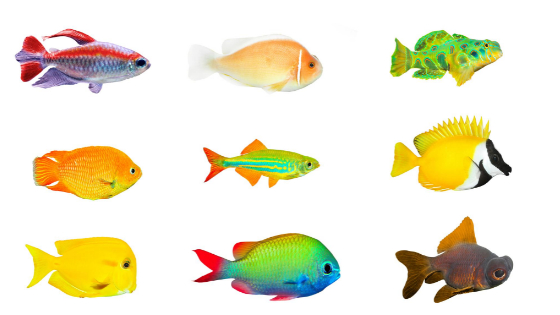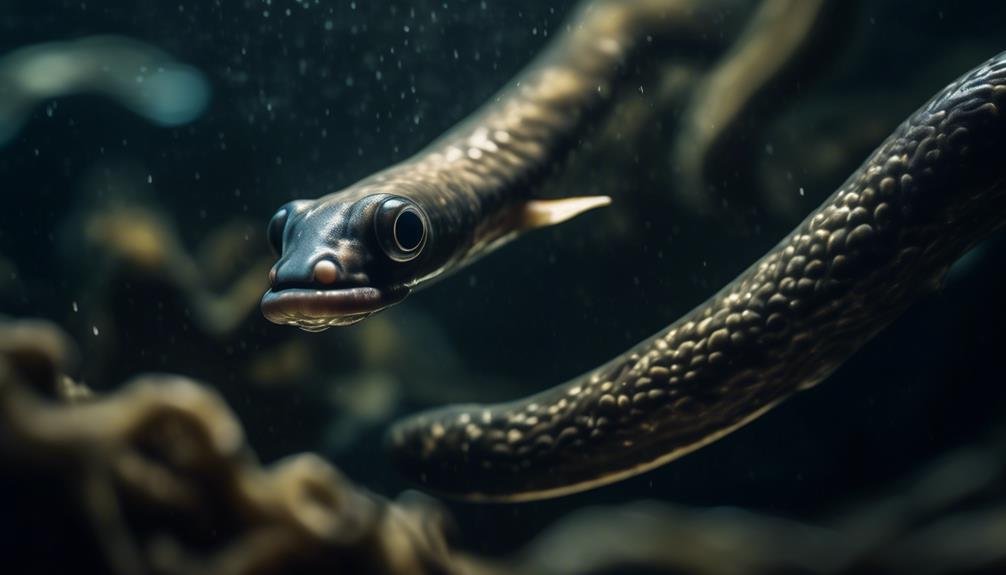
They say appearances can be deceiving, and when it comes to saltwater eels, this couldn’t be more true. These mysterious creatures, with their enchanting yet aggressive nature, have long captured the attention of marine enthusiasts around the world.
But what lies beneath their snake-like exterior? Where do they come from, and how can we provide them with the care they need? In this exploration of the secrets behind these captivating creatures, we will uncover the enigmatic world of saltwater eels and reveal the surprising truths that await.
Prepare to be amazed as we dive into the depths of their intriguing characteristics, origins, and the challenges of keeping them in captivity.
Key Takeaways
- Saltwater eels are large and have distinctive characteristics, such as scale-less, mucus-covered bodies and a continuous fin ridge.
- They are native to the Western Atlantic but can be found in other oceans worldwide.
- Saltwater eels require large aquariums with soft sand substrates and dimly lit environments with caves and crevices.
- They have aggressive tendencies, particularly during feeding frenzies, and require suitable tank mates that can withstand their aggression.
Size and Characteristics of Saltwater Eels
Saltwater eels are known for their large size and distinctive characteristics, making them fascinating creatures to observe in the aquarium. These snake-like creatures have scale-less, mucus-covered bodies, and their fins merge together to create a continuous fin ridge, with no separated dorsal, anal, and caudal fins. They come in various colors such as green, yellow, brown, grey, and black.
Most species of saltwater eels originate from the Western Atlantic Ocean. When it comes to their care, these eels require large aquariums and prefer dimly lit environments with caves and crevices. They’re primarily bottom dwellers and prefer soft sand substrates. As for their temperament, saltwater eels are highly predatory and aggressive, so they’re only recommended for experienced aquarists. They can bite when scared or in a feeding frenzy.
Suitable tank mates include large angelfish, pufferfish, lionfish, and tangs. When it comes to feeding, some wild-caught eels may be reluctant to adapt to captivity, but they can accept a range of live and frozen foods like shrimp, clams, and fish parts. Captive bred eels are more likely to accept frozen foods.
Breeding saltwater eels in the home aquarium is virtually impossible, and their maintenance requires weekly partial water changes and a sufficient filtration system.
Origins of Saltwater Eels
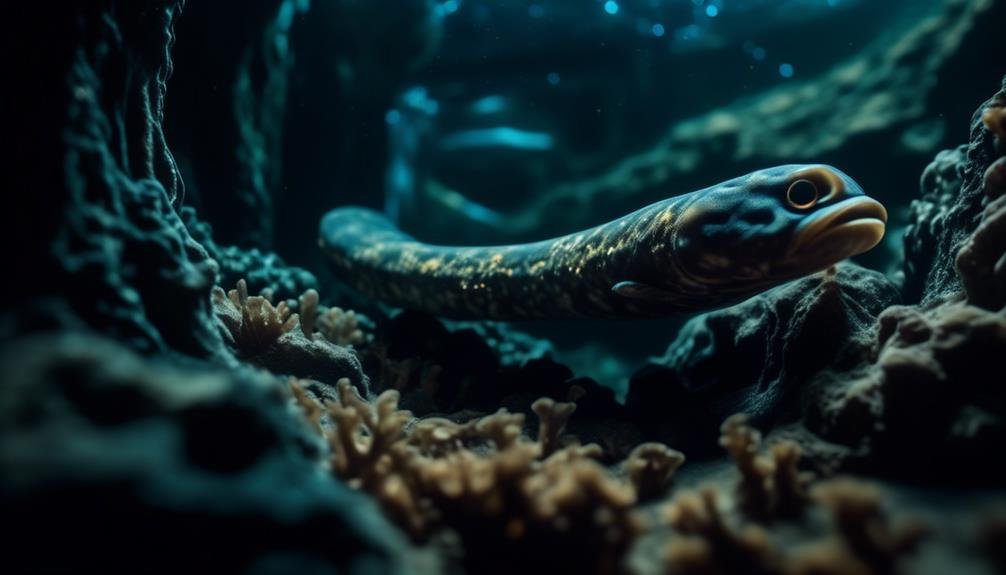
Most saltwater eels originate from the Western Atlantic Ocean. They can be found in various colors such as green, yellow, brown, grey, and black. Here are some interesting facts about the origins of saltwater eels:
- Native to the Western Atlantic: Saltwater eels are primarily found in the Western Atlantic, ranging from North America to South America. They inhabit coastal waters, estuaries, and even venture into freshwater rivers.
- Wide Distribution: These eels have a wide distribution and can be found in different regions, including the Gulf of Mexico, the Caribbean Sea, and the eastern coast of the United States.
- Migration Patterns: Some saltwater eel species, like the American eel, have fascinating migration patterns. They migrate thousands of miles from their freshwater homes to the Sargasso Sea to reproduce.
- Global Presence: While many saltwater eels originate from the Western Atlantic, they can also be found in other oceans around the world, such as the Indo-Pacific and the Mediterranean Sea.
Understanding the origins of saltwater eels helps us appreciate their natural habitat and the challenges they face in their journey.
Aquarium Requirements for Saltwater Eels
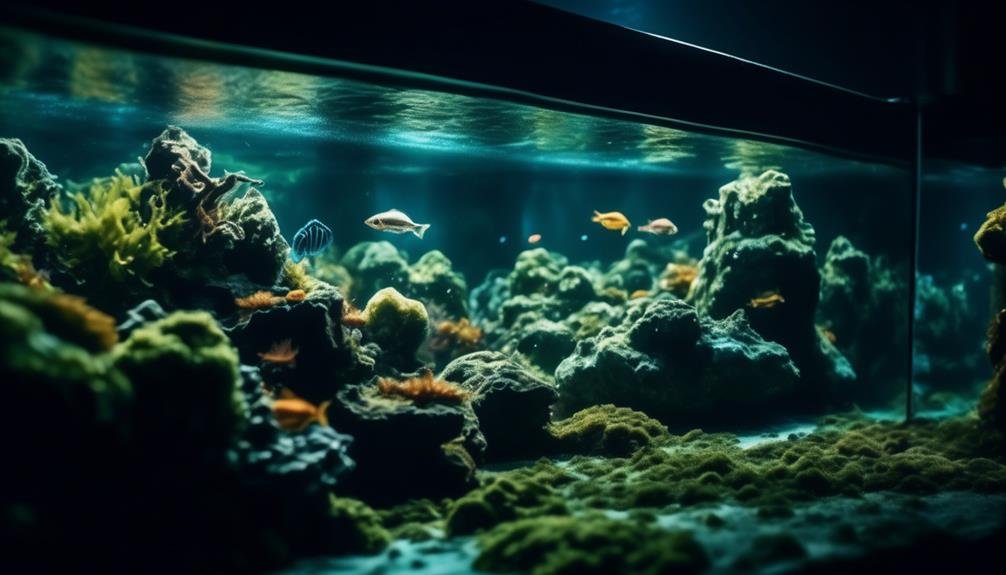
To properly care for saltwater eels, it’s important to understand the specific aquarium requirements they need.
Saltwater eels require large aquariums due to their large size. They’re primarily bottom dwellers and prefer soft sand substrates.
Since they’re nocturnal, eels prefer dimly lit aquariums with caves and crevices where they can hide. It’s recommended to provide them with suitable tank mates such as large angelfish, pufferfish, lionfish, and tangs.
However, it’s important to note that eels are highly predatory and aggressive, so they’re only recommended for experienced aquarists. They can bite when scared or in a feeding frenzy, so it’s crucial to choose large, moderately aggressive tank mates.
Additionally, eels accept a range of live and frozen foods like shrimp, clams, and fish parts, although captive bred eels are more likely to accept frozen foods.
Breeding in the home aquarium is virtually impossible, and regular partial water changes and a sufficient filtration system are necessary for their maintenance.
Lighting and Habitat Preferences of Saltwater Eels
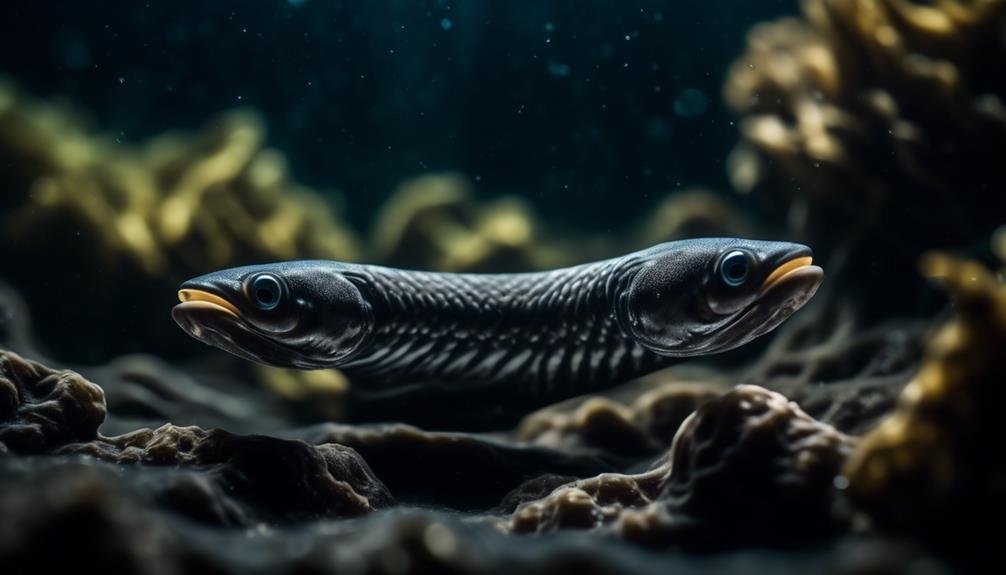
For optimal care of saltwater eels, it’s important to consider their lighting and habitat preferences. Here are some key points to keep in mind:
- Dim Lighting: Saltwater eels are nocturnal creatures and prefer dimly lit aquariums. Provide them with low-intensity lighting to mimic their natural habitat.
- Caves and Crevices: Eels love to hide and seek shelter. Create a habitat that includes caves, crevices, and other hiding spots. This will help them feel secure and reduce stress.
- Soft Sand Substrate: Eels are primarily bottom dwellers and prefer soft sand substrates. This allows them to bury themselves partially, mimicking their natural behavior in the wild.
- Simulate Natural Environment: Consider adding rocks, plants, and other décor to recreate their natural environment. This will provide them with a sense of security and make them feel more at home.
Tank Mates for Saltwater Eels
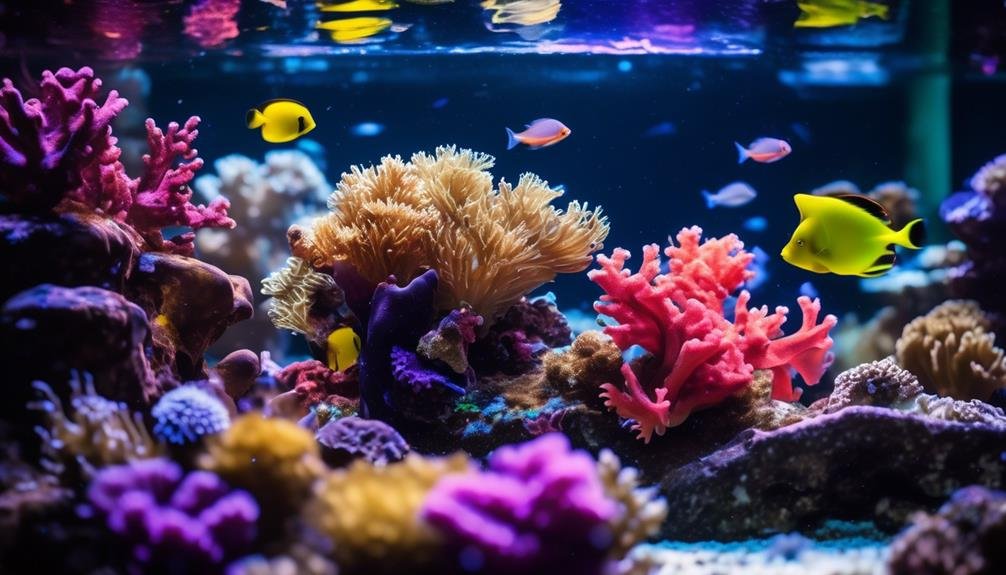
Now let’s explore the ideal tank mates for your saltwater eels to ensure a harmonious aquatic community. Saltwater eels are highly predatory and aggressive, so it is important to choose tank mates that can withstand their behavior. Large angelfish, pufferfish, lionfish, and tangs are suitable companions for eels. These tank mates are not only large enough to avoid becoming prey but also have a moderate level of aggression to hold their ground. To help you visualize the compatibility of these species, here is a table showcasing the ideal tank mates for saltwater eels:
| Tank Mate | Compatibility |
|---|---|
| Large Angelfish | High |
| Pufferfish | High |
| Lionfish | High |
| Tangs | High |
| Other Eels | Low |
With the right tank mates, you can create a vibrant and diverse saltwater aquarium while ensuring the well-being of your eels.
Aggressive Nature of Saltwater Eels
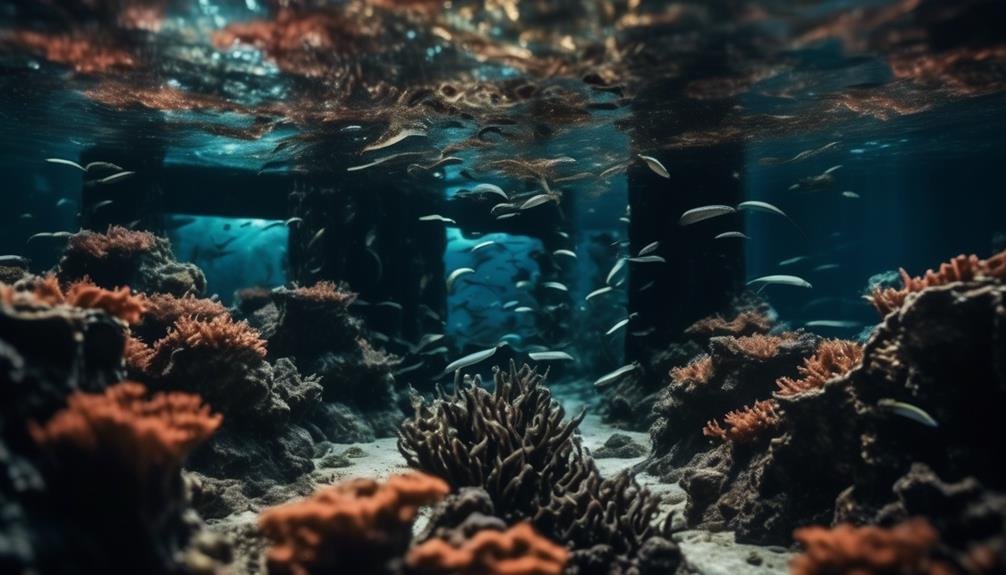
Saltwater eels exhibit a highly aggressive nature, making them a challenging choice for aquarium enthusiasts. Here are four reasons why their aggressive temperament can be a concern:
- Territorial behavior: Saltwater eels are fiercely territorial and will defend their space against any perceived threats. This can lead to conflicts with other tank mates and even result in injuries.
- Feeding frenzy: When in a feeding frenzy, eels become hyperactive and aggressive. They may snap at anything that comes near, including your hand. It’s crucial to exercise caution during feeding time.
- Startle response: Eels can be easily startled, especially when their environment is disturbed. A sudden movement or loud noise can trigger their aggressive instincts, leading to potential harm to themselves or others in the tank.
- Biting tendencies: When scared or feeling threatened, eels may resort to biting as a defense mechanism. Their sharp teeth can cause painful injuries, making them unsuitable for beginners or those with delicate tank mates.
Given their aggressive nature, saltwater eels require careful handling and should only be kept by experienced aquarists who can provide the necessary precautions and suitable tank mates.
Care Tips for Experienced Aquarists
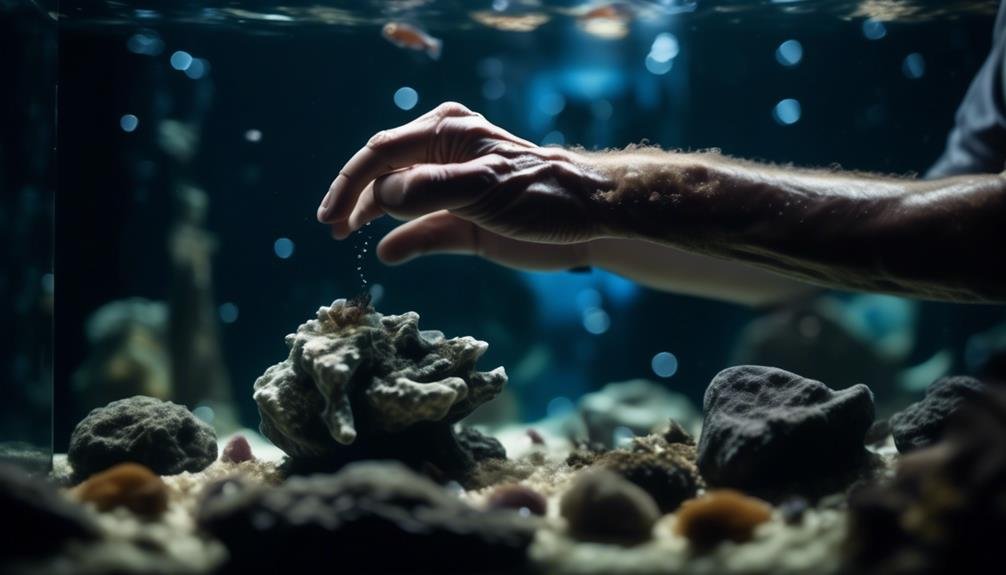
Experienced aquarists should take special care when handling and maintaining saltwater eels due to their aggressive nature and specific needs. These large, snake-like creatures have mucus-covered, scale-less bodies and fins that merge together to create a continuous fin ridge. They prefer dimly lit aquariums with caves and crevices, and soft sand substrates.
Saltwater eels are primarily bottom dwellers and are nocturnal, making them suitable tank mates for large angelfish, pufferfish, lionfish, and tangs. However, their aggressive and predatory behavior means they should only be kept by experienced aquarists. These eels can bite when scared or during a feeding frenzy.
While some wild-caught eels may be reluctant to adapt to captivity, they can be fed a range of live and frozen foods such as shrimp, clams, and fish parts. Breeding them in the home aquarium is virtually impossible, so weekly partial water changes and a sufficient filtration system are necessary for their maintenance.
Feeding Habits of Saltwater Eels
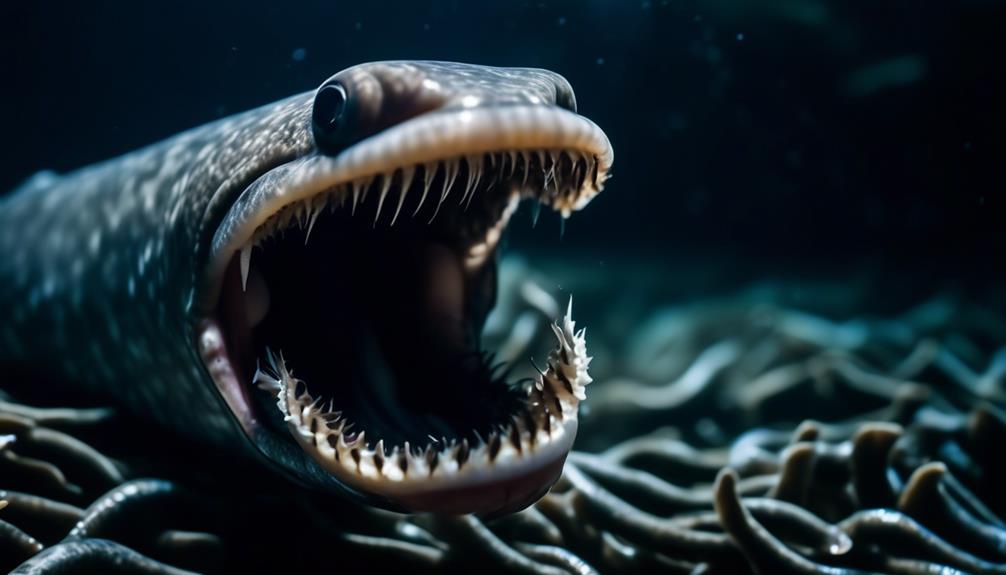
When it comes to the feeding habits of saltwater eels, it’s important to understand their preferences and adapt to their unique dietary needs. Here are some key points to keep in mind:
- Variety is key: Saltwater eels have a diverse diet and thrive on a variety of live and frozen foods. Offer them options like shrimp, clams, and fish parts to ensure they receive the necessary nutrients.
- Wild-caught vs. captive bred: Wild-caught eels may be more reluctant to adapt to captivity and may require more patience when it comes to feeding. On the other hand, captive bred eels are more likely to accept frozen foods right away.
- Feeding frequency: Saltwater eels should be fed regularly, but not excessively. Aim for feeding them 2-3 times a week to prevent overfeeding and maintain their health.
- Feeding techniques: Eels are known to be ambush predators, so it’s best to feed them using feeding tongs or by placing the food in their hiding spots. This allows them to exhibit their natural hunting behavior while ensuring they get the food they need.
Challenges in Feeding Wild-Caught Eels
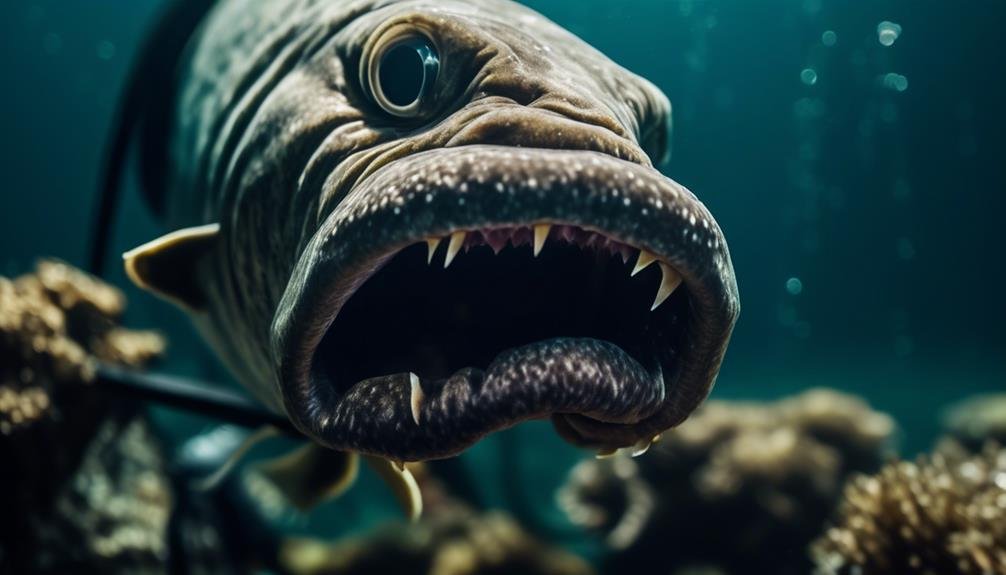
Feeding wild-caught eels can present unique challenges due to their reluctance to adapt to captivity. These eels may have been accustomed to hunting and catching live prey in their natural habitat, making it difficult for them to transition to a captive diet. Their preference for live food can make it challenging to provide them with the necessary nutrition in an aquarium setting.
While some wild-caught eels may eventually accept a range of live and frozen foods, others may continue to resist captivity and refuse to eat. This can be a concern for aquarists who want to provide adequate care for these fascinating creatures.
Patience, experimentation with different food options, and seeking advice from experienced aquarists can help overcome these challenges and ensure the well-being of wild-caught eels in captivity.
Breeding Challenges of Saltwater Eels
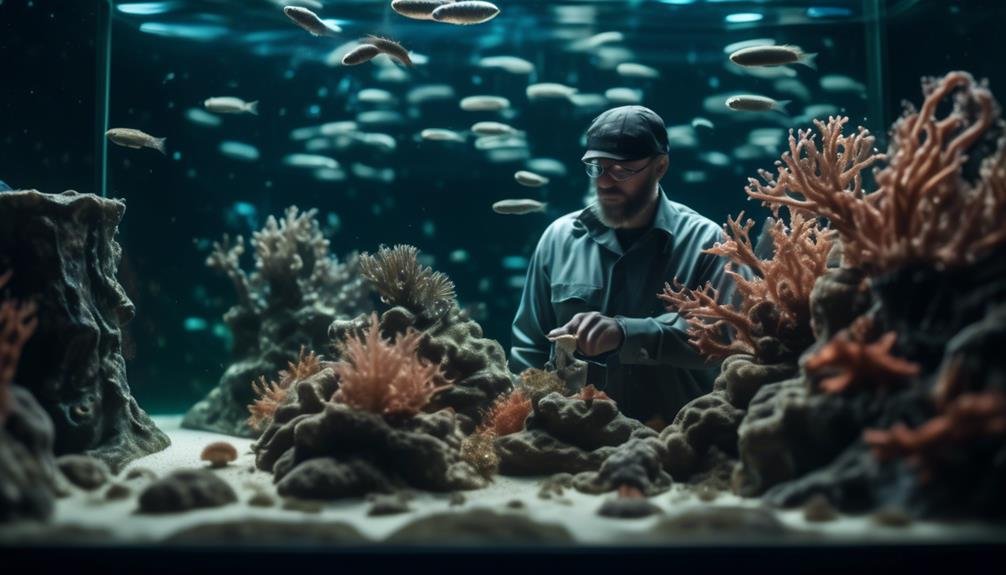
Breeding saltwater eels presents significant challenges in captivity. These mysterious creatures have complex reproductive behaviors that make it difficult for them to breed successfully in a controlled environment. Here are some of the main challenges you may encounter when trying to breed saltwater eels:
- Lack of knowledge: There’s still much to learn about the reproductive biology of saltwater eels, which makes it difficult to replicate their natural breeding conditions.
- Synchronization of sexes: Saltwater eels have separate male and female individuals, and it can be challenging to ensure that you have a compatible pair for breeding.
- Larval rearing: Eel larvae are extremely small and delicate, requiring specialized care and feeding techniques. The survival rate of eel larvae is notoriously low in captivity.
- Complex life cycle: Saltwater eels undergo a remarkable journey from their freshwater birthplace to the ocean, and replicating this complicated life cycle in captivity is a significant challenge.
Despite these difficulties, researchers and dedicated aquarists continue to work on improving breeding techniques for saltwater eels, hoping to unlock the secrets of their reproduction and conservation.
Maintenance and Filtration for Eel Tanks

To maintain a healthy and thriving eel tank, proper maintenance and filtration are essential.
Regular maintenance tasks include performing weekly partial water changes and monitoring water parameters such as temperature, salinity, and pH levels.
Additionally, it’s crucial to invest in a high-quality filtration system specifically designed for saltwater aquariums. A good filtration system will help remove waste and toxins from the water, ensuring a clean and stable environment for your eels.
It’s recommended to use a combination of mechanical, chemical, and biological filtration methods to effectively remove debris, neutralize harmful substances, and promote beneficial bacteria growth.
Regularly cleaning and maintaining the filtration system is also important to prevent clogging and ensure optimal functioning.
Conclusion and Final Thoughts
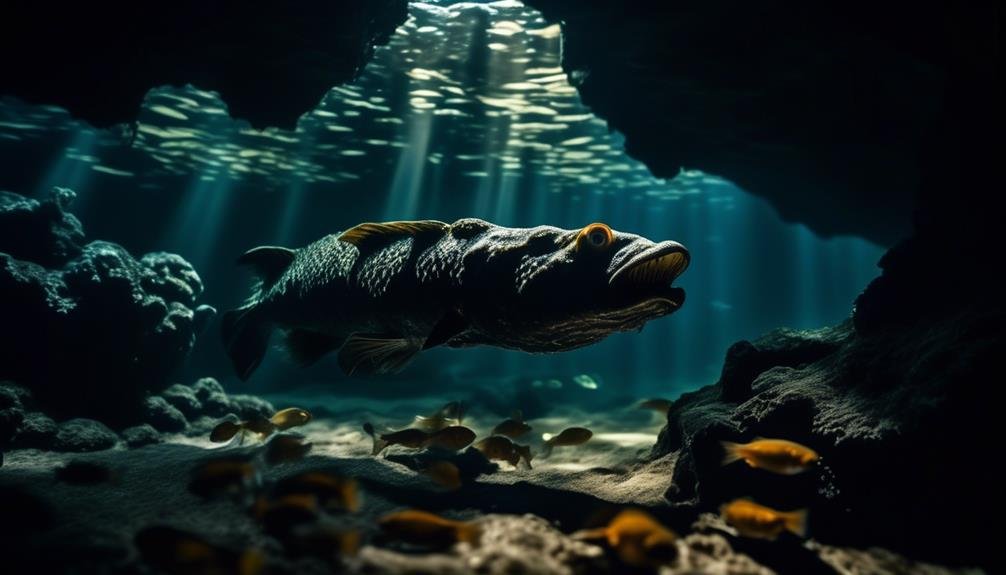
Now that you understand the importance of maintenance and filtration for eel tanks, let’s wrap up our discussion with some final thoughts and conclusions.
- Eel tanks require diligent maintenance and a proper filtration system to ensure the health and well-being of these mysterious and aggressive creatures.
- The size, temperament, and predatory nature of saltwater eels make them unsuitable for novice aquarists. Only experienced aquarists should consider keeping them.
- It’s crucial to provide suitable tank mates that can withstand the eel’s aggressive behavior. Large angelfish, pufferfish, lionfish, and tangs are good options.
- Breeding saltwater eels in a home aquarium is extremely challenging, and success is rare. Therefore, it’s important to appreciate these fascinating creatures as pets rather than breeding projects.
Frequently Asked Questions
How Can I Safely Handle a Saltwater Eel Without Getting Bitten?
To safely handle a saltwater eel without getting bitten, use a thick glove or a net. Make sure to approach slowly and avoid sudden movements. Remember, eels can bite when scared or in a feeding frenzy.
Can Saltwater Eels Be Kept in a Community Tank With Smaller, Non-Aggressive Fish?
Yes, saltwater eels can be kept in a community tank with smaller, non-aggressive fish. However, it is important to choose tank mates carefully and ensure proper tank size and hiding spaces to prevent aggression.
Are There Any Specific Precautions I Should Take When Feeding Wild-Caught Saltwater Eels?
When feeding wild-caught saltwater eels, it’s important to take precautions. They may be reluctant to adapt to captivity, so offer a range of live and frozen foods like shrimp, clams, and fish parts.
Is It Possible to Breed Saltwater Eels in a Controlled Environment?
It is virtually impossible to breed saltwater eels in a controlled environment. Weekly water changes and a good filtration system are necessary for their maintenance.
What Are Some Common Mistakes to Avoid When Maintaining the Filtration System for an Eel Tank?
When maintaining the filtration system for your eel tank, avoid common mistakes like neglecting regular cleaning and maintenance, using inadequate or mismatched equipment, and not monitoring water parameters closely.
What Makes Saltwater Eels Aggressive and Mysterious?
Saltwater eels are known for their aggression and mysterious behavior. Some attribute this to the majesty of saltwater sharks, as eels often inhabit the same waters. The eels’ territorial nature and nocturnal habits also contribute to their enigmatic reputation. Their unique adaptations and elusive nature add to their allure.
Conclusion
In conclusion, saltwater eels are fascinating creatures that require specialized care in order to thrive in captivity. Their unique appearance and aggressive temperament make them a captivating addition to any aquarium. By providing them with the optimal conditions such as a dimly lit tank with ample hiding spots, a soft sand substrate, and suitable tank mates, you can create a thriving environment for these enigmatic creatures.
Although there are challenges in feeding and breeding them, the rewards of keeping saltwater eels make it a worthwhile endeavor.




